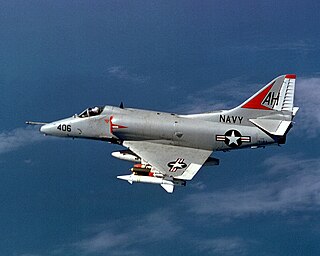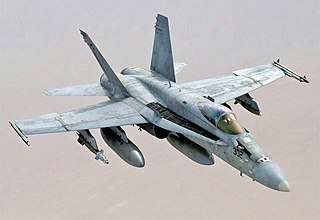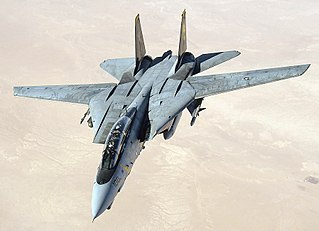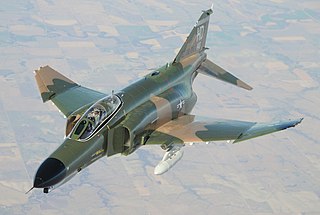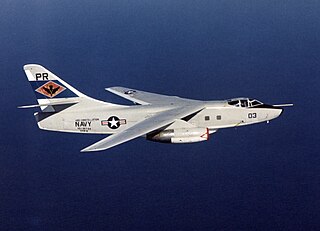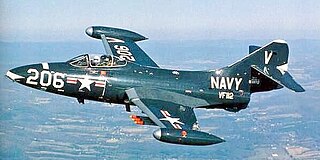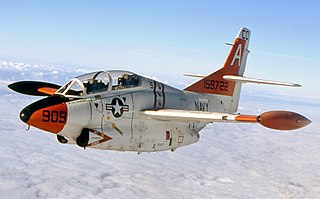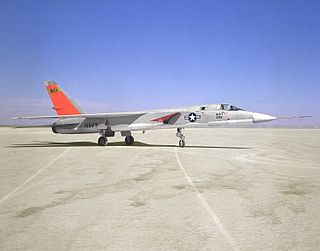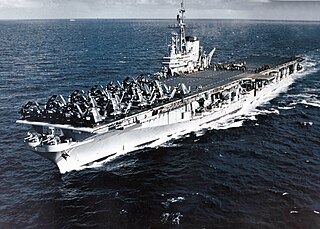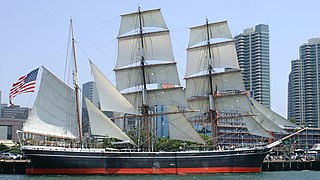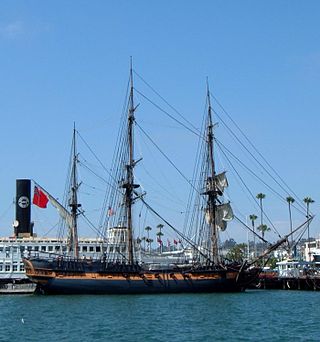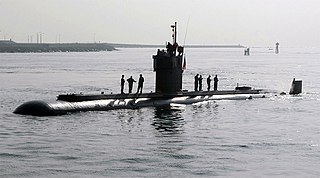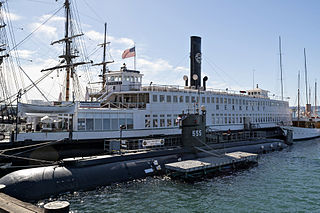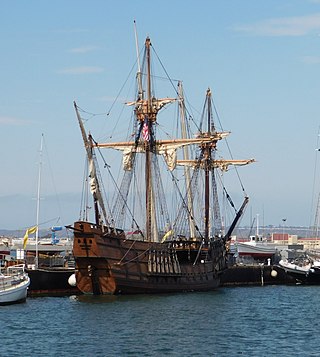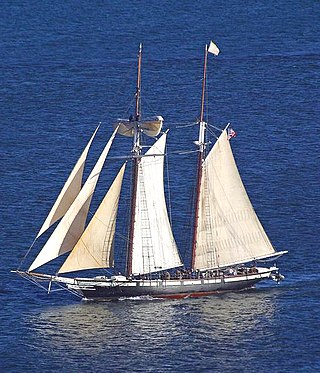Self-guided Sightseeing Tour #2 in San Diego, United States
Legend
Tour Facts
2 km
24 m
Experience San Diego in United States in a whole new way with our free self-guided sightseeing tour. This site not only offers you practical information and insider tips, but also a rich variety of activities and sights you shouldn't miss. Whether you love art and culture, want to explore historical sites or simply want to experience the vibrant atmosphere of a lively city - you'll find everything you need for your personal adventure here.
Activities in San DiegoIndividual Sights in San DiegoSight 1: Douglas A-4 Skyhawk
The Douglas A-4 Skyhawk is a single-seat subsonic carrier-capable light attack aircraft designed and produced by the American aerospace manufacturer Douglas Aircraft Company, and later, McDonnell Douglas. It was originally designated A4D under the United States Navy's pre-1962 designation system.
Sight 2: McDonnell Douglas F18 Hornet
The McDonnell Douglas F/A-18 Hornet is an all-weather supersonic, twin-engine, carrier-capable, multirole combat aircraft, designed as both a fighter and attack aircraft. Designed by McDonnell Douglas and Northrop, the F/A-18 was derived from the latter's YF-17 in the 1970s for use by the United States Navy and Marine Corps. The Hornet is also used by the air forces of several other nations, and formerly by the U.S. Navy's Flight Demonstration Squadron, the Blue Angels.
Sight 3: Grumman F14 Tomcat
The Grumman F-14 Tomcat is an American carrier-capable supersonic, twin-engine, two-seat, twin-tail, all-weather-capable variable-sweep wing fighter aircraft. The Tomcat was developed for the United States Navy's Naval Fighter Experimental (VFX) program after the collapse of the General Dynamics-Grumman F-111B project. A large and well-equipped fighter, the F-14 was the first of the American Teen Series fighters, which were designed incorporating air combat experience against MiG fighters during the Vietnam War.
Sight 4: McDonnell Douglass F4 Phantom II
The McDonnell Douglas F-4 Phantom II is an American tandem two-seat, twin-engine, all-weather, long-range supersonic jet interceptor and fighter-bomber that was developed by McDonnell Aircraft for the United States Navy. Proving highly adaptable, it entered service with the Navy in 1961 before it was adopted by the United States Marine Corps and the United States Air Force, and by the mid-1960s it had become a major part of their air arms. Phantom production ran from 1958 to 1981 with a total of 5,195 aircraft built, making it the most produced American supersonic military aircraft in history, and cementing its position as a signature combat aircraft of the Cold War.
Sight 5: Douglas A3 Skywarrior
The Douglas A-3 Skywarrior is a jet-powered strategic bomber that was developed and produced by the Douglas Aircraft Company. It was designed by Douglas on behalf of the United States Navy, which sought a carrier-capable strategic bomber. In July 1949, Douglas was awarded the contract to produce its design, having bested eight other aircraft companies' submissions. Unlike rival designs, which had aimed for a 100,000 lb (45,000 kg) maximum take-off weight, the Skywarrior was developed for a 68,000 lb (31,000 kg) take-off weight, facilitating its use from the navy's existing Midway-class aircraft carriers. Large portions of the aircraft were produced by the Westinghouse Electric Corporation, including its early Westinghouse J40 turbojet engines, which failed to meet promises and were replaced by the rival Pratt & Whitney J57 engine by mid-1953. On 28 October 1952, the prototype XA3D-1 performed the type's maiden flight.
Sight 6: Grumman F9F Panther
The Grumman F9F Panther is an early carrier-based jet fighter designed and produced by the American aircraft manufacturer Grumman. It was the first jet-powered fighter aircraft to see air-to-air combat with the United States Navy as well as being Grumman’s first jet fighter.
Sight 7: North American T-2 Buckeye
The North American T-2 Buckeye was the United States Navy's intermediate training aircraft, intended to introduce U.S. Navy and U.S. Marine Corps student naval aviators and student naval flight officers to jets. It entered service in 1959, beginning the replacement process of the Lockheed T2V SeaStar, and was itself replaced by the McDonnell Douglas T-45 Goshawk in 2008.
Sight 8: North American A5 Vigilante
The North American A-5 Vigilante is an American carrier-based supersonic bomber designed and built by North American Aviation (NAA) for the United States Navy. Before the 1962 unification of Navy and Air Force designations, it was designated A3J.
Sight 9: USS Midway Museum
Get Ticket*USS Midway (CVB/CVA/CV-41) is an aircraft carrier, formerly of the United States Navy, the lead ship of her class. Commissioned eight days after the end of World War II, Midway was the largest warship in the world until 1955, as well as the first U.S. aircraft carrier too big to transit the Panama Canal. She operated for 47 years, during which time she saw action in the Vietnam War and served as the Persian Gulf flagship in 1991's Operation Desert Storm. Decommissioned in 1992, she is now a museum ship at the USS Midway Museum, in San Diego, California, and is the only remaining inactive U.S. aircraft carrier that is not an Essex-class aircraft carrier.
Sight 10: Star of India
Get Ticket*Star of India is an iron-hulled sailing ship, built in 1863 in Ramsey, Isle of Man as the full-rigged ship Euterpe. After a career sailing from Great Britain to India and New Zealand, she was renamed, re-rigged as a barque, and became a salmon hauler on the Alaska to California route. Retired in 1926, she was restored as a seaworthy museum ship in 1962–3 and home-ported at the Maritime Museum of San Diego in San Diego, California. She is the oldest ship still sailing regularly and also the oldest iron-hulled merchant ship still afloat. The ship is both a California Historical Landmark and United States National Historic Landmark.
Sight 11: HMS Surprise
HMS Surprise is a modern tall ship built at Lunenburg, Nova Scotia, Canada. The vessel was built in 1970 as HMS Rose to a Phil Bolger design based on the original 18th-century British Admiralty drawings of HMS Rose, a 20-gun sixth-rate post ship from 1757.
Sight 12: USS Dolphin
Get Ticket*USS Dolphin (AGSS-555) was a United States Navy diesel-electric deep-diving research and development submarine. She was commissioned in 1968 and decommissioned in 2007. Her 38-year career was the longest in history for a US Navy submarine to that point. She was the Navy's last operational conventionally powered submarine.
Sight 13: Berkeley
Berkeley was one of several ferryboats of the Southern Pacific Railroad that for sixty years operated on San Francisco Bay between the Oakland Pier and the San Francisco Ferry Building. Built in 1898 by the Union Iron Works of San Francisco, she served after the 1906 earthquake, ferrying refugees across the bay to Oakland.
Sight 14: Medea
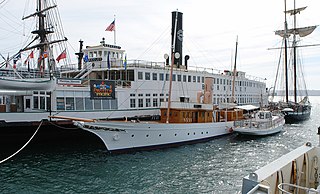
The Medea is a 1904 steam yacht preserved in the Maritime Museum of San Diego, United States. Named after Medea, the wife of Jason, she was built in a record 51 days on the Clyde at Alexander Stephen and Sons shipyard at Linthouse by John Stephen for William Macalister Hall of Torrisdale Castle, Scotland.
Sight 15: San Salvador
San Salvador was the flagship of explorer Juan Rodríguez Cabrillo. She was a 100-foot (30 m) full-rigged galleon with 10-foot (3.0 m) draft and capacity of 200 tons. She carried officers, crew, and a priest.
Sight 16: Californian
Californian is a 1984 replica of the United States Revenue Marine cutter Lawrence, which operated off the coast of California in the 1850s. On July 23, 2003, Governor Arnold Schwarzenegger signed Bill No. 965, making her the "official state tall ship" of California.
Share
How likely are you to recommend us?
Disclaimer Please be aware of your surroundings and do not enter private property. We are not liable for any damages that occur during the tours.
GPX-Download For navigation apps and GPS devices you can download the tour as a GPX file.
